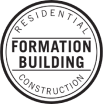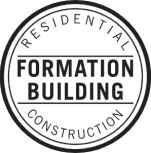Table of Contents
Building near the coast in Mona Vale comes with its own set of challenges and considerations for longevity. Here are some key factors to think about when choosing materials and requirements:
Environmental factors:
Mona Vale Coastal Living: Key Considerations
- Saltwater exposure: Choose materials resistant to corrosion and erosion from salt spray and wind. Stainless steel, galvanized steel, and certain types of treated timber can be good options. Avoid untreated wood and iron.
- Wind: High winds can be common in coastal areas. Ensure your building is securely anchored and use wind-resistant materials for walls and roof.
- Sun exposure: Intense sunlight can lead to fading and deterioration of materials. Opt for UV-resistant finishes and shading solutions like awnings or eaves.
- Storms and flooding: Coastal areas are prone to storms and flooding. Elevate your building if possible and use flood-resistant materials for lower levels. Consider storm shutters and drainage systems.
- Groundwater: High groundwater levels can cause dampness and foundation problems. Choose appropriate waterproofing materials and drainage systems to prevent moisture build-up.
Material considerations:
- Masonry: Brick, concrete, and stone are durable materials that can withstand harsh coastal conditions. However, they require proper sealing and maintenance to prevent cracking and water damage.
- Timber: While susceptible to rot and termite damage, treated timber can be a good option for certain elements if well-maintained. Use pressure-treated timber and ensure proper ventilation to prevent moisture build-up.
- Metals: Stainless steel, aluminum, and galvanized steel are resistant to corrosion and offer longevity. However, they can be susceptible to heat expansion and require proper insulation in hot climates.
- Roofing: Choose a durable and weatherproof roofing material like metal, slate, or concrete tiles. Asphalt shingles may not withstand the harsh coastal environment as well.
Building requirements and regulations:
- Council regulations: Check local council building regulations for specific requirements for coastal construction. These may include setback distances from the shoreline, wind load requirements, and flood zone restrictions.
- Building codes: Ensure your building complies with all relevant Australian building codes, including the National Construction Code (NCC). The NCC has specific clauses for coastal construction (Clause 31: Coastal Hazards).
- Professional advice: Consult with experienced architects, engineers, and builders who specialize in coastal construction. They can advise on the best materials and strategies for your specific project.
Additional tips for longevity:
- Regular maintenance: Inspect your building regularly for signs of wear and tear, and address any issues promptly.
- Proper ventilation: Ensure adequate ventilation to prevent moisture build-up, which can lead to mold and rot.
- Landscaping: Use appropriate landscaping plants that can help absorb excess water and stabilize soil.
By carefully considering these factors and making informed choices about materials and regulations, you can build a home in Mona Vale that will withstand the coastal environment and last for generations.



